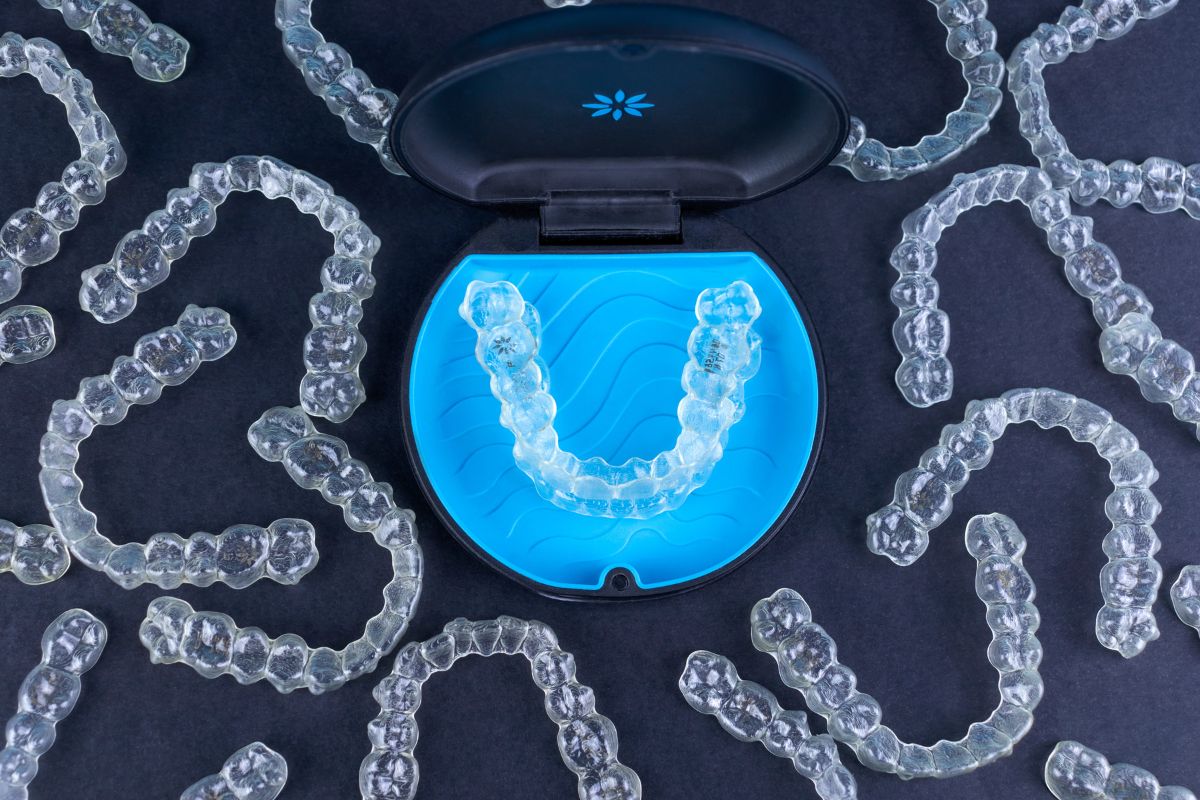
Straight teeth are not just vital for a confident smile—they influence your oral health. Properly aligned teeth reduce the risk of oral diseases, contribute to better chewing function, and prevent excessive wear and tear.
Many patients find themselves torn between braces and clear aligners when it comes to orthodontic treatment. Both options straighten teeth, improve oral health, and enhance your smile. However, each treatment takes a significantly different approach to achieving these goals. Explore the differences between braces and clear aligners to find the perfect orthodontic solution for you.
Aesthetic Appearance
Visibility is the deciding factor between choosing braces or aligners for many. Braces consist of metal brackets attached to each tooth, connected by a wire. They can be more visible when you speak or smile. Although there are less noticeable versions, such as ceramic braces, they are still more apparent than clear aligners.
Clear Aligners are almost invisible. They consist of a clear plastic material and that fits snugly over your teeth, making them a preferred option for adults and teenagers concerned about the aesthetic aspect of orthodontic treatment.
Treatment Process
Braces require regular dental visits for wire adjustments and progress check-ins. Clear aligners involve a more hands-off experience. You receive a series of aligners, each slightly different from the first, that you must switch out every two weeks. Each aligner moves your teeth incrementally until they reach the desired alignment. You’ll still have periodic check-ups with your dentist, but less frequently than braces. The duration of either treatment can vary widely depending on the individual’s needs. Typically, clear aligners offer a quicker solution for mild to moderate misalignments.
Comfort and Convenience
Having something foreign in your mouth for months can be a strange experience for many. Clear aligners often have the edge over traditional braces in terms of comfort and convenience. Aligners’ smooth plastic and custom-fit tend to be more comfortable and less likely to irritate your gums or the inside of your mouth. Clear aligners are also removable. You can take them out when eating, drinking anything other than water, and brushing your teeth.
Braces are fixed and can make eating certain foods challenging and complicate oral hygiene practices. The brackets and wires of traditional metal braces create nooks and crannies that can trap food particles and plaque, making it challenging to thoroughly clean your teeth.
Understanding the differences between braces and clear aligners can help you find the best orthodontic treatment for your needs and preferences. Contact our orthodontic team if teeth straightening aligners sound like a good fit for you. Pinnacle Dental Associates is here to help you achieve the perfect smile.
